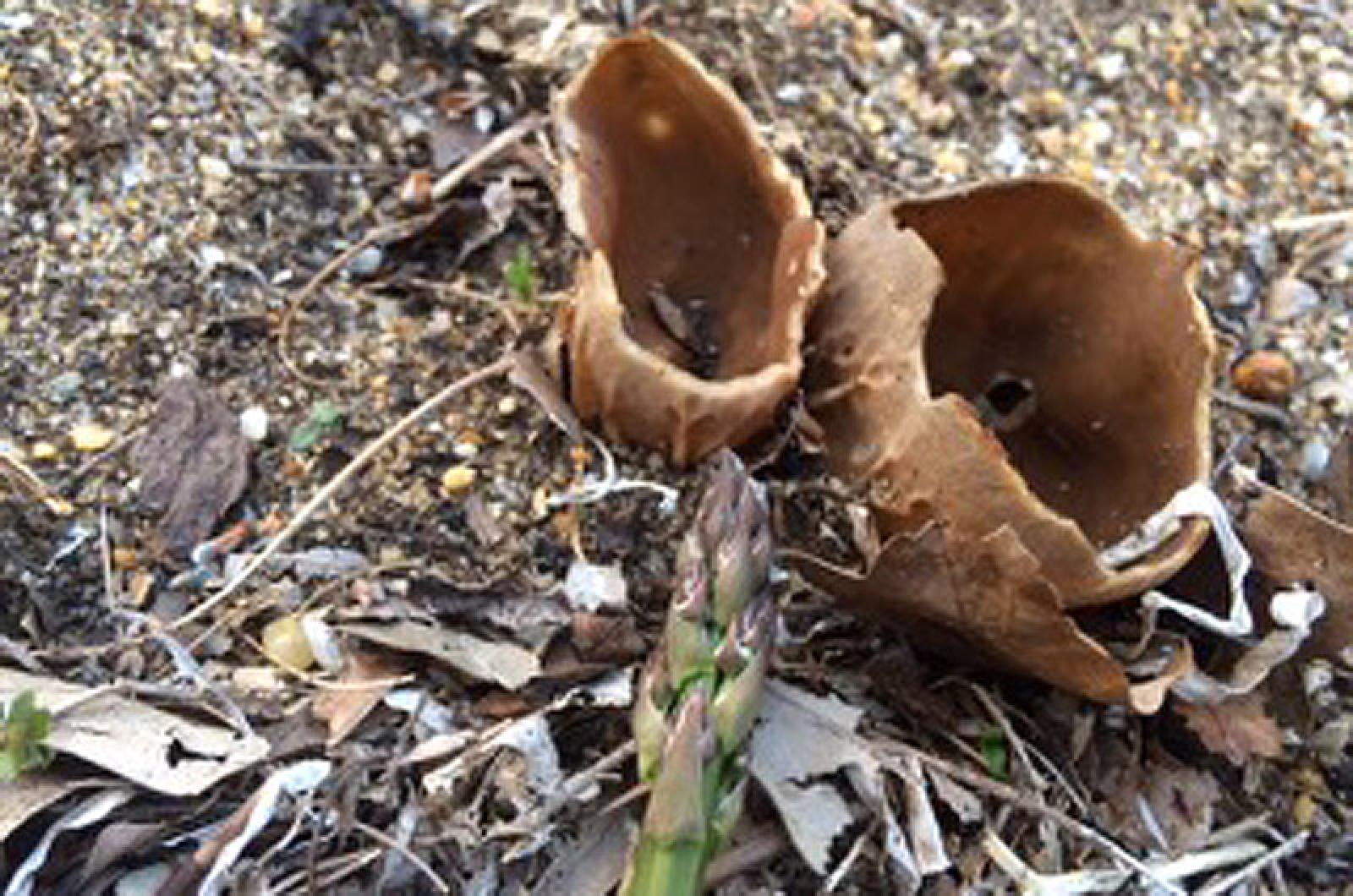The latest report from the asparagus patch is one of plenty. Those glorious shoots seem to be sprouting up at significant speeds, but in Nancy Weaver’s garden the splendid spears have some company.
Dung cup mushrooms have emerged right next to an asparagus spear in the garden. With such an evocative (and stinky) name, it would be correct to assume that this fungus likes manure. The species is also equally at home in straw, compost, rich soil, wood chips and rotting wood.
Though I am no shroom expert, and cup fungi are notoriously difficult to identify, all signs point to the dung cup as the identity of this intruder. Dung cup mushrooms are in the genus Peziza, making them the original mushroom Peziza. They comprise a group of approximately 50 different varieties, and this specific species’ name is Peziza vesiculosa. Peziza is believed to mean foot, and likely refers to the lack of a stalk on these fruiting bodies. These mushrooms are also known by the more appealing names of fawn and blistered cup funguses.
Cup mushrooms, so-called even though the phrase is not a scientific classification, literally turn your mushroom assumptions upside down. Instead of the iconic curved toadstool-like structure, a cup fungus is shaped, as the name suggests, like a cup or saucer. This particular species has a cup that can have a diameter of almost four inches and usually emerges in spring, fall and sometimes even winter.
When we see mushrooms we are seeing only the above-ground fruiting portion of a larger organism. Most of the structure is below the ground and is called the mycelium. The cup-shaped fruiting body of this species is called an apothecium; and thus cup mushrooms are also known as apothecial fungi.
In addition to their distinctive appearance, apothecial mushrooms also have another trick up their sleeves. Their inner surface is covered with asci, or tubes that hold spores. Together, these asci and the unique shape of this species serve to distribute the spores. Wind will blow the spores out of the cup and rain will splash them outside of the cup structure.
Even with this ingenious design, this species just isn’t my cup of tea, so to speak, mostly due to its inedibility. In culinary contrast, a favorite relative to the dung cup is the wood ear, which is found in Asian cuisine such as hot and sour soup, among other dishes.
Another interesting relative is the domicile cup fungus. This similar species is not found in your garden, but instead, resides inside your house.
With its practical shape, sizeable fruit and effective means of reproduction, the dung cup is certainly not a species to be poo-pooed. Luckily, its numbers are far exceeded in my friend’s garden by asparagus spears, which are after all the plot’s whole point. With this special apothecial species taking up residence alongside the asparagus, however, it wouldn’t be incorrect to say that Nancy’s cup runneth over.
Suzan Bellincampi is director of the Felix Neck Wildlife Sanctuary in Edgartown, and author of Martha’s Vineyard: A Field Guide to Island Nature.







Comments
Comment policy »